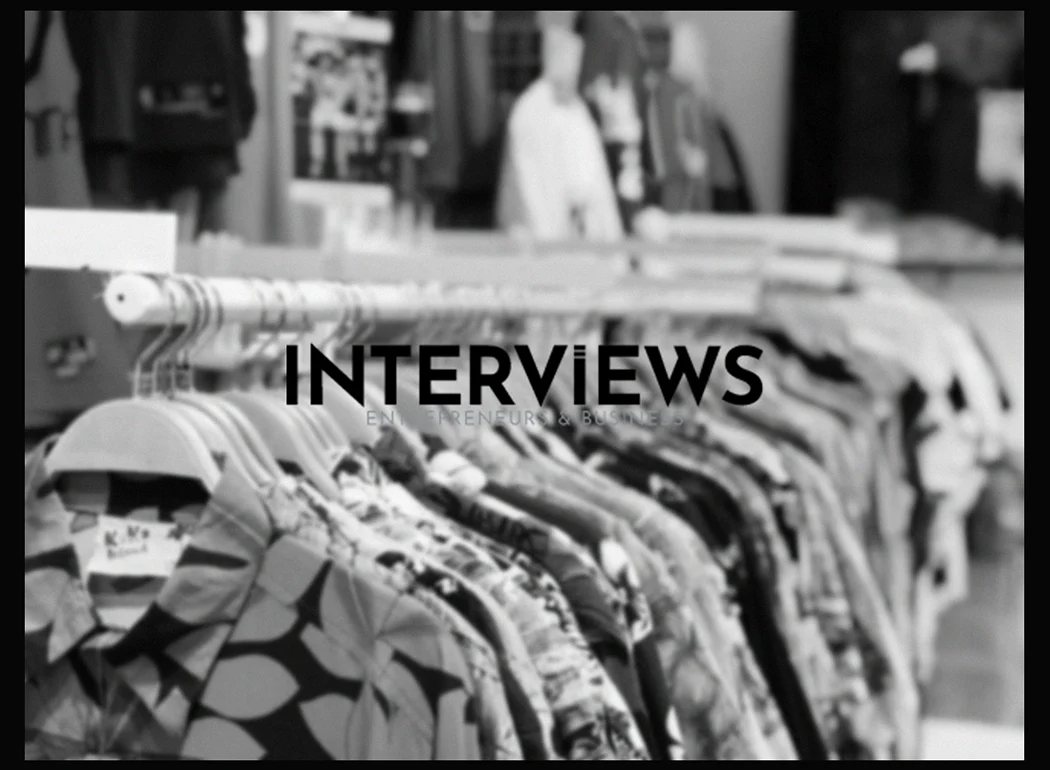So, You Wanna Be a Fashion Mogul? Buckle Up, Buttercup!
Ever dreamt of seeing your designs on runways? Starting a clothing company seems glamorous. It can be, but it’s not just about style. You need a solid plan, some business savvy, and maybe a lot of caffeine.
This is more than sketching pretty dresses. It’s about building a brand. We’re talking costs, strategies, legalities, and details that separate a hobby from a business. Think of this as your guide and your first step into the world of clothing. Ready to dive in? Let’s unravel how to launch a clothing company without getting into financial trouble.
Cha-Ching! Decoding the Cost of Launching Your Clothing Empire
Before you think about fabrics, let’s talk money. Starting a clothing line isn’t free. Your investment varies based on your ambition and whether your business is online or physical. Let’s break it down.
The Online Oasis: Launching an Online Clothing Line
Thinking of a digital runway? Good choice. Online lines offer flexibility and lower entry costs. But “lower” doesn’t mean “free.” You’ll need about $5,800 to $17,000. That’s not chump change. This covers essential costs: website development, initial inventory, marketing, and setup.
Brick-and-Mortar Bonanza: The Retail Clothing Line Route
Want a physical store? The experience is appealing. But it costs more. Launching a retail clothing line can set you back $64,500 to $131,300. This includes rent, inventory, staffing, store design, and operational expenses. It’s a bigger gamble but can pay off.
The Boutique Dream: Opening a Small Clothing Store
Thinking cozy? A boutique reflecting your style requires an investment of $50,000 to $150,000. This covers rent, inventory, fixtures, staffing, and marketing but at a smaller scale than a larger store. It’s dipping your toes before diving in.
Budget Breakdown: The Bare Minimum to Launch a Brand (India Focus)
In India, starting a clothing brand can cost around ₹5 lakh to ₹10 lakh. That’s about $6,000 to $12,000 USD. This budget includes space (physical or virtual), staff, operating costs, and producing your initial collection. Costs can rise quickly based on your brand ambition.
Feeling a bit terrified? Don’t be! Knowing costs is half the battle. Now let’s outline the steps to bring your clothing brand to life. It’s about strategy!
Step-by-Step Style Guide: Crafting Your Clothing Company
Now let’s get to building your brand. These steps are your blueprint, guiding you from an idea to a fully functional clothing company. It’s a journey, not a sprint. Get ready!
Step 1: Develop a Business Plan – Your Brand’s North Star
A business plan is your roadmap to success. It prevents you from wandering aimlessly in fashion. Think of it as your brand’s DNA; it outlines your identity and strategy.
- Define Your Brand: Your name, logo, and aesthetic are vital. Minimalist? Bohemian? Get it right. This is your first impression.
- Identify Your Target Audience: Who will wear your designs? Trendsetters? Corporate queens? Understand their needs and desires.
- Determine Your Niche: What makes you unique? Sustainable fabrics? Plus-size options? Find your unique selling proposition (USP).
- Outline Your Product Line: What will you offer? T-shirts, gowns, swimwear? Start narrow and grow wide.
- Research Your Market: Stay current; learn about trends and competitors. Market research helps keep you relevant.
- Create a Marketing Strategy: If no one knows about your collection, it doesn’t matter. Plan your marketing attack.
- Set Up Your Business Structure: Sole proprietorship? LLC? Legal structure impacts liability and taxes. Consult an expert.
Step 2: Design and Develop Your Clothing Line – From Sketch to Stitch
Time to unleash your inner designer. Here’s where your brand’s vision comes to life.
- Sketch Your Designs: Let creativity flow! Sketch out your collection that aligns with your brand and audience. Use mood boards.
- Source Fabrics and Materials: Choose quality fabrics that align with your values and market preferences.
- Find a Production Method: Decide how your designs become garments:
- In-house production: You manage it all; great for small batches but costly.
- Outsourcing to a manufacturer: Scalable for larger quantities; ensure quality.
- Print-on-demand: Low risk, inventory-free; ideal for startups but may lower profits.
Select a suitable model for your budget.
Step 3: Build Your Online Store and Market Your Brand – Digital Domination
An online presence is essential. Your website is your digital flagship store; marketing is your megaphone.
- Choose an E-commerce Platform: Shopify, Etsy, or WooCommerce? Pick a user-friendly platform that integrates with marketing tools.
- Create a Website: Visually stunning, easy navigation, and showcase your brand beautifully. High-quality product photos are essential.
- Develop a Marketing Plan: How to drive traffic and convert visitors? Use social media, email marketing, and SEO to enhance visibility.
- Build a Strong Online Presence: Engage followers! Create content like styling tips and behind-the-scenes looks. Build a community.
- Consider Offline:
- Marketing: The real world needs attention. Pop-up shops, trade shows, local retailer collaborations, and event sponsorships boost brand visibility and credibility. This is vital in early days.
Step 4: Important Considerations – Details Matter
Several small but crucial elements can impact your clothing company.
- Pricing Strategy: Set prices wisely. Price too high, no sales. Price too low, profit loss. Use costs, target market, competitor prices, and perceived brand value for pricing strategy. Markup is essential!
- Inventory Management: Stock too much leads to unsold goods. Stock too little means missed sales. Manage inventory well. Decide on order quantity, storage methods, and tracking processes, particularly without print-on-demand.
- Customer Service: Happy customers repeat business. Provide excellent service. Be responsive and help solve issues quickly. Word-of-mouth spreads fast, both positively and negatively.
- Legal and Financial: Taxes, permits, regulations can be tiresome. Consult with professionals for compliance. It may not be glamorous, but it helps avoid future surprises.
Bonus Round: Additional Must-Dos
Here’s a checklist of essentials:
- Source fashion fabrics or create designs. Fabric is foundational.
- Set up production for your clothing line. Get it going!
- Build pricing and inventory strategies. Numbers are crucial.
- Develop design skills. Continuous learning is key.
- Track fashion trends. Stay relevant. Avoid chasing trends blindly.
- Research trends and market needs. Know your audience.
- Select your e-commerce platform. The digital storefront matters.
Phew! That’s the roadmap in a stylish nutshell. Now let’s zoom in on critical details.
Legal Insights: Important Legal and Cost Considerations
Legal and financial factors may not be glamorous. Ignoring them is a mistake. Let’s clarify some key considerations.
Legal Structure: LLC or Not?
Is an LLC necessary for your clothing line? Technically, no. But it’s often advisable. An LLC offers personal liability protection. If sued or in debt, your personal assets remain safe. You separate personal and business finances, which is wise as you grow.
Copyrighting and Trademarking: Protect Your Brand
Imagine someone stealing your name and logo. Terrifying! Copyrighting and trademarking protect your brand. Register your brand name and logo. Trademark safeguards your identity and enables legal measures against counterfeiters. It’s an investment for your brand’s future.
Business Registration: Make it Official
Register your business. This is critical. The specifics vary based on location and structure. Generally, this includes registering your name, obtaining permits, and setting up a tax ID. Don’t skip this. Operating legally is essential for success.
Profitability Factors: Clothing Cashflow
Let’s discuss profits! What determines if your brand thrives or fails?
- Market Demand: Is demand present? Beautiful designs are meaningless if no one buys. Thorough market research helps you understand demand.
- Business Model: Online, brick-and-mortar, wholesale, or subscription models will affect profitability. Choose a model fitting your target audience and resources.
- Brand Positioning: Luxury brands command high prices. Budget options focus on volume. Your positioning influences pricing and marketing strategies.
- Effective Cost Management: Control costs wisely. Watch expenses closely; savings accumulate. Be frugal in the early stages.
Manufacturing Costs: Decoding Production Expenses
Manufacturing costs compose a large part of expenses. Understanding these matters for accurate pricing.
- Production Model: Small orders, large batches, print-on-demand:
- Small Orders: Higher per-unit costs ($500 to $10,000), great for testing.
- Larger Batches: Better pricing but needs higher investment (tens of thousands).
- Print-on-Demand: Low risk and costs ($6 to $50 per item), ideal for startups.
- Materials: Fabrics, trims, embellishments eat up 60-70% of manufacturing costs. Source wisely while maintaining quality.
- Labor Costs: Significant expense in sewing and finishing. Domestic production raises costs. Overseas might lower expenses but adds complexity.
- Equipment: Sewing machines and printing equipment can be expensive. Leasing or buying used may be best to start.
- Workplace Expenses: Rent and utilities can add up; home offices minimize these costs at first.
- Quality Control: Ensuring quality matters. Budget for quality control processes ($500 to $3,000) to avoid returns.
- Sampling: Sample making is crucial but can cost money ($50 to $300 each). Include sampling in your budget for designs.
- Design and Branding: Extensive design customization from manufacturers increases costs. Specify your design details to avoid surprises.
- Production Complexity: Intricate designs raise costs. Simpler designs often cost less, especially initially.
- Minimum Order Quantity (MOQ): Many manufacturers set MOQs. Plan production quantities to avoid overstocking or failing to meet minimums.
- Location: Countries with lower labor costs (China, India) reduce expenses. Consider ethical implications and shipping costs.
- Shipping and Fulfillment: Factor in shipping costs and fulfillment expenses for online businesses. These can impact profits significantly.
Sample Costs: Understanding Clothing Sample Expenses
Samples are essential for perfecting designs before production, but they come with costs. Sample costs depend on:
- Materials: High-quality fabrics lead to pricier samples.
- Quantity: Ordering several samples may lower per-piece pricing.
- Manufacturer: Different manufacturers charge varying sampling fees. Compare options.
- Pattern Making: Complex patterns raise costs ($200 – $2,000).
- Fittings: Professional models cost $250 – $450 per hour; this is crucial for sizing.
- Sourcing: Unique textiles may have sourcing fees. Plan ahead.
Design Dilemmas: Collection Costs and Quantities
Your first collection is foundational. How many designs should you launch and at what cost?
Collection Composition: Quantity vs. Quality
Aiming for 3-8 styles for your women’s collection is wise. Don’t launch with too many styles. A focused, well-executed range is better than an unfocused assortment. Keep it impactful and narrow when you start.
Collection Cost Breakdown: Design Investment
Expect to spend $5,000 to $15,000 for initial designs. This includes designer fees, tech packs for manufacturers, and initial samples. Complex designs will influence costs.
Failure Files: Reasons Brands Fail
Starting a clothing brand is thrilling, yet many fail. Awareness of common pitfalls can help you avoid these traps.
- Upfront Production Costs: Many startups mismanage production costs. Careful budgeting matters.
- Market Fit Errors: Finding the right market fit is crucial. No matter how brilliant a product is, market research is essential for success.
- is your lifeline.
- Financial Planning Fiascos: A lack of financial planning and consistent revenue streams is fatal. A solid financial roadmap and steady sales are essential. Without them, even stylish brands will sink.
- No Market Need Mayhem: A startling 42% of startups fail due to no market need for their product. Ouch. Ensure you solve a problem or fulfill a real desire, don’t just create what you think is cool.
Profit Power: Markup, Margins, and Money-Making Models
Profitability is key. Let’s explore how clothing brands make money (or don’t).
Profitability Ponderings: What’s the Most Lucrative Path?
The “most profitable clothing business” shifts with many factors – brand strategy, target market, operational efficiency, and market trends. There’s no single answer. It depends on your unique business choices.
Fast Fashion Frenzy: Profitable but Problematic?
Fast fashion is often viewed as the most profitable model. It has ethical and environmental controversies. Profit comes from high volume, rapid trends, and lower costs but can harm sustainability and labor practices. Think long-term before chasing fast fashion.
Markup Magic: The Golden Range
Markup is key for retail pricing – it’s the difference between wholesale and retail price. In clothing, markup ranges from 50% to 80%. If a garment costs $10 wholesale, you’d sell it for $20 to $50 based on your markup strategy.
Keystone Pricing: Doubling Down on Dollars
Some retailers use a “keystone” pricing method. This means doubling the wholesale price for retail. It’s simple but not wise for all brands or items.
Markup Motivators: Factors Influencing Price Tags
Several factors shape your final markup:
- Brand Image: Luxury brands get higher markups for perceived value.
- Type of Clothing: Basic tees have lower markups than detailed outerwear.
- Retailer’s Costs: High rents and staffing costs need higher markups for profit.
Legally Speaking (Again): LLCs, Trademarks, and Tax Write-offs
Back to legal and financial details for clarity.
LLC Lowdown: Online Selling and Liability
Do you *need* an LLC to sell clothes online? No. You can start as a sole proprietor. But an LLC offers crucial liability protection as your business grows. It’s a shield against legal or financial issues.
Trademark Triumph: Securing Your Brand Name
You must register your clothing brand name. Protect your identity, prevent copycats, and create a strong asset. Trademark registration is essential for brand security.
Tax Tactics: Write-Off Wonders (Clothes Edition)
Can you write off clothes as a business expense under an LLC? Yes, but only if they “cannot reasonably be used in a non-business situation.” Consider branded uniforms or specialized garments. That cocktail dress at a networking event? Not deductible. Ask a tax pro for advice.
No Experience, No Problem? Launching a Line with Zero Fashion Background
Want to launch a clothing line but lack design experience? No worries! It’s doable. Here’s your survival guide:
Step 1: Business Plan Basics (Even for Beginners)
- Market Research: Understand your audience, analyze competitors, and discover your unique selling proposition. Knowledge is critical, even without design skills.
- Define Your Niche: Focus on a specific style or customer segment to stand out. Niche down to gain recognition.
- Brand Identity: Create a compelling name, logo, and style that resonates with your audience. Your brand story can be your greatest asset.
- Financial Projections: Estimate startup and production costs, plus potential revenue. Show you’ve crunched the numbers.
Step 2: Design and Production Detour (For Non-Designers)
- Design Assistance: If you’re not a sketch whiz, work with a freelance designer or use online platforms for basic design help.
- Fabric Sourcing Savvy: Research high-quality fabrics. Fabric knowledge is key even if you’re not designing completely.
- Production Pathways: Consider options that reduce your design burden:
- Print-on-demand: Design graphics for garments, no inventory problems.
- Dropshipping: Partner with suppliers handling inventory and shipping.
- Manufacturer Partnership: Find one that helps in design development based on your ideas.
Choose the easiest design process to get started.
Step 3: Online Onslaught & Marketing Mastery
- E-commerce Platform Power: Use platforms like Shopify or Etsy, or a custom-built website if skilled. User-friendly tools are vital when managing many tasks.
- Social Media Surge: Build a strong presence, especially on Instagram and Pinterest. Showcase your brand style and engage your audience.
- Marketing Strategy Magic: Create a robust marketing plan using social media, influencer collaborations, and paid ads to reach your audience. Marketing skills can offset design gaps in early stages.
Step 4: Legal and Financial Foundations (No Excuses)
- Business Registration Basics: Register your business name and choose type (LLC, sole proprietorship). Legal setup is a must.
- Pricing Strategy Pro: Determine competitive pricing for your line. Knowledge of pricing is crucial.
- Payment Processing Power-Up: Set up secure payment options for your store. Smooth transactions build customer trust.
Step 5: Continuous Climb (Always Improving)
- Customer Feedback Fiesta: Solicit and respond to customer feedback. Insights are gold for growth.
- Stay Updated Surge: Watch fashion trends and marketing strategies. Continuous learning is vital.
- Network Navigator: Connect with other entrepreneurs. Networking opens doors to knowledge and opportunities.
Beginner Boosters: Tips for the No-Experience Entrepreneur
- Start Small and Smart: Avoid heavy upfront investment. Test your concept before going all-in.
- Focus on Fabric and Fit Quality: Prioritize good materials and craftsmanship. Quality wins, even in simple designs.
- Patience Power: Creating a successful line takes time. Don’t be discouraged by setbacks.
- Learn from Legends (and Everyone Else): Analyze successful brands. Determine what works and what doesn’t, learn from others’ journeys.
Name Game Strong: Choosing a Brand Name That Sells
Your brand name is your digital handshake. It needs memorability, relevance, and appeal. Let’s strategize the name game.
Step 1: Understand Your Brand Essence
- Define Your Brand Values: What makes your line unique? Sustainable? Bold? Your name should hint at your core values.
- Identify Your Target Audience: Who do you dress? Your name should appeal to them.
- Determine Your Brand Niche: Streetwear or formal? Your name should fit your style.
Step 2: Brainstorming Bonanza
- Keyword Kraziness: List keywords that describe your style, values, and audience. These are your naming foundations.
- Name Generator Nuggets: Use online generators for inspiration based on keywords or themes but don’t rely solely on them.
- Mix and Match Mania: Combine words for unique names. Get creative!
- Competitive Context: Check competitor names. Aim for unique, not derivative.
- Think Outside the Box Brilliance: Embrace unconventional names. Memorable names often surprise.
Step 3: Availability Audit – Name Check Reality
- Domain Name Dive: Check domain availability early. A matching domain is vital for online presence.
- Trademark Treasure Hunt: Conduct a trademark search. Ensure your chosen name isn’t used.
- already in use to avoid legal issues later.
- Social Media Handle Harmony: Check handle availability on major platforms. Consistent handles boost brand identity.
Step 4: Test Drive Time – Name Validation
- Say it Loud: Is the name easy to pronounce? Remembering it matters.
- Feedback Frenzy: Gather thoughts from friends and potential customers. Fresh views help.
- Visualize the Vogue: Does the name work well in a logo or on a website? Look matters.
Step 5: Final Name Nirvana
- Resonance Rules: Pick a name that connects with your brand and audience. It must be memorable, relevant, and usable on all platforms.
- Trademark Triumph (Register It!): Register your trademark. Secure your name and logo legally.
- Brand Style Guide Genesis: Create a simple style guide. Maintain consistency across all channels from the start.





